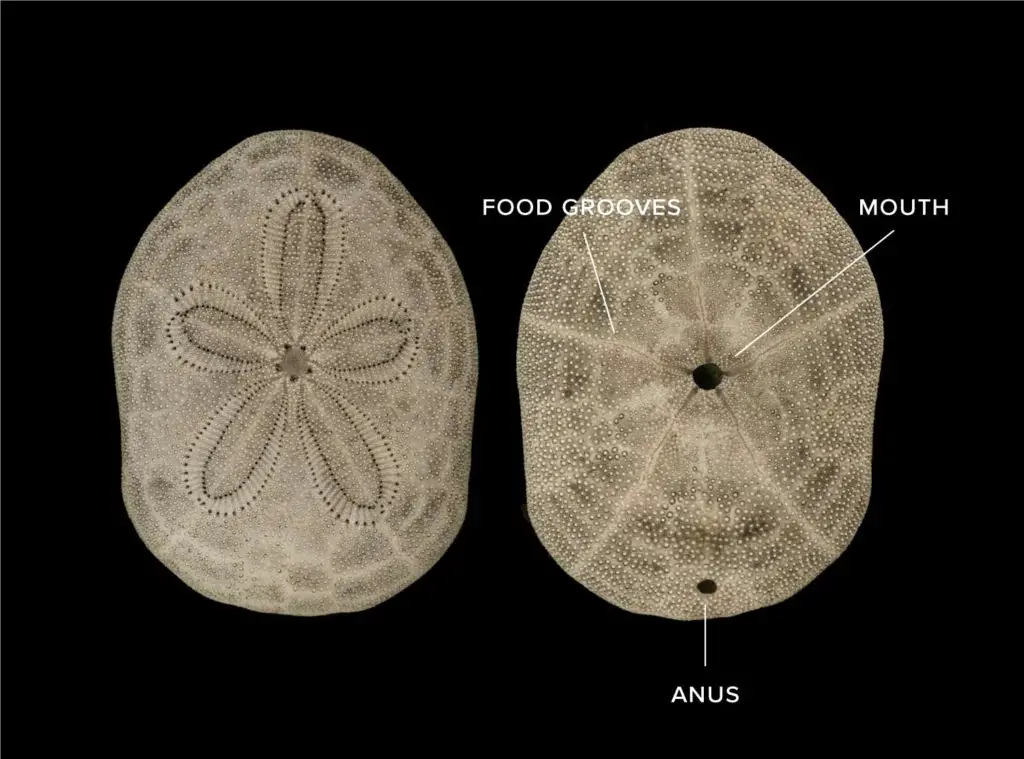What Do Sand Dollars Eat
Sand dollars are fascinating living marine creatures that a lot of people don’t even know about. Sometimes we think they are just pretty white shells with a flower shape on them. I found one myself a few years ago and I was amazed when my scuba diving instructor told me that they are actually living animals.
I had a lot of questions about them about what they look like when alive and what they eat. In this post, we’ll talk all about that, but let’s start with a quick answer:
Sand dollars eat detritus (dead particulate organic material), planktons, crustacean larvae, and debris from the seafloor by using their tiny spines and tube feet. Their mouth has a jaw with five tiny teeth sections that help them to grind up the sand, chewing encrusting organisms as well as microscopic algae.
However, that certainly doesn’t tell the whole story. Below I’ll explain sand dollars’ diet and how they eat. Furthermore, I’ll explain what animals eat sand dollars and if they are edible to humans. Read on!
Sand dollars diet
Sand dollars are non-harmful animals that feed on small specks of organic matter from the sandy bottom of the ocean. When they’re adults, they move around the sand with their mouth side down and mostly eat detritus (dead particulate organic material), planktons, crustacean larvae, and debris from the seafloor.
Their mouth has a jaw with five tiny teeth sections that help them to grind up the sand, chewing encrusting organisms and microscopic algae. Scientists also noticed that sometimes they eat small pieces of other creatures, and so they are classified as carnivores by the World Register of Marine Species.
It’s also worth knowing that young sand dollars pick small grains of magnetite from the sand and store them in chambers of their gut called diverticula. They use diverticula as weight belts, and exactly like divers use theirs, they help them to stay on the bottom.
This iron-rich mineral weighs young sand dollars down, keeping them grounded until they grow bigger and heavier so they’re not washed away by currents.
How do sand dollars eat?
Like other Echinoderms, sand dollars are covered in spines all over their body. They help them to move around the seafloor but also to move food to their mouth opening. They developed different feeding strategies which I’ll describe below.
Deposit feeders
The most popular one is developed by sand dollars that are deposit feeders. They collect individual sand grains from the sandy seafloor and use their sticky tube feet and mucous-filled channels to slowly move food to the mouth opening that is located in the center of the flower-like shape pattern on the bottom of their body.
Next, the nutrients are collected from digested sand. Sometimes sand dollars chew their food for about 15 minutes before swallowing. It usually takes them two days to digest the food.

Once the food is in the sand dollar’s mouth, it moves into the esophagus. This tube is made up of two parts – the upper and lower. The upper part contracts to transport the food to the lower esophagus. The contractions push the food into the stomach where digestive enzymes break down the nutrients so they can be absorbed into the sand dollar’s body. Next, the waste passes through the intestine and is discharged through the anus.
Suspension feeders
One of the sand dollar species on the West Coast of California (which is one of the regions where sand dollars are found) called eccentric sand dollar ( Dendraster Excentricus) developed a different feeding strategy – suspension feeding. It uses its spines to push up and flip onto its front edge. By “standing” vertically, it’s exposing both the top and bottom of its test to the passing water, which helps it to more easily grab tiny bits of food.
Unlike the other species, it can eat food caught on either its top or bottom surface. So far, it’s the only sand dollar species discovered to feed this specific way. This shows us how animals are able to adapt to new environments, making sand dollars one of the most interesting sea creatures.

What animals eat sand dollars?
One of the biggest predators of sand dollars are seagulls. They carry them in their mouth and dash their body on hard objects. Marine predators of sand dollars are mostly fish species like cod, flounder, sheepshead, and haddock, crabs, sea stars, and octopuses.
Occasionally otters may eat sand dollars but mostly they don’t come into contact with each other as sand dollars live in saltwater locations and otters live in freshwaters. However, sometimes when sand dollars are washed up on a beach, where saltwater meets freshwater, otters will eat sand dollars. When sand dollars wash ashore and dry out, they look like silver dollars, which is why they’re called sand dollars.
Do humans eat sand dollars?
Sand dollars have hard skeletons covered by short spines all over their body that fall off after they die. This means that they have very few edible parts (if any) that don’t make it worth eating. It’s also worth knowing that taking live sand dollars is mostly illegal and regulations may vary depending on the region.
Most of the time, taking dead sand dollars is legal but it’s good to check if there are any signs on the beach or ask employees who work there. Sometimes there are restrictions about the number of sand dollars you can collect in one day.
You may also like:

Welcome to Bubbly Diver!
I’m glad to see you here. This blog is created for all marine creature lovers by a bubbly diver - me, Dori :)


